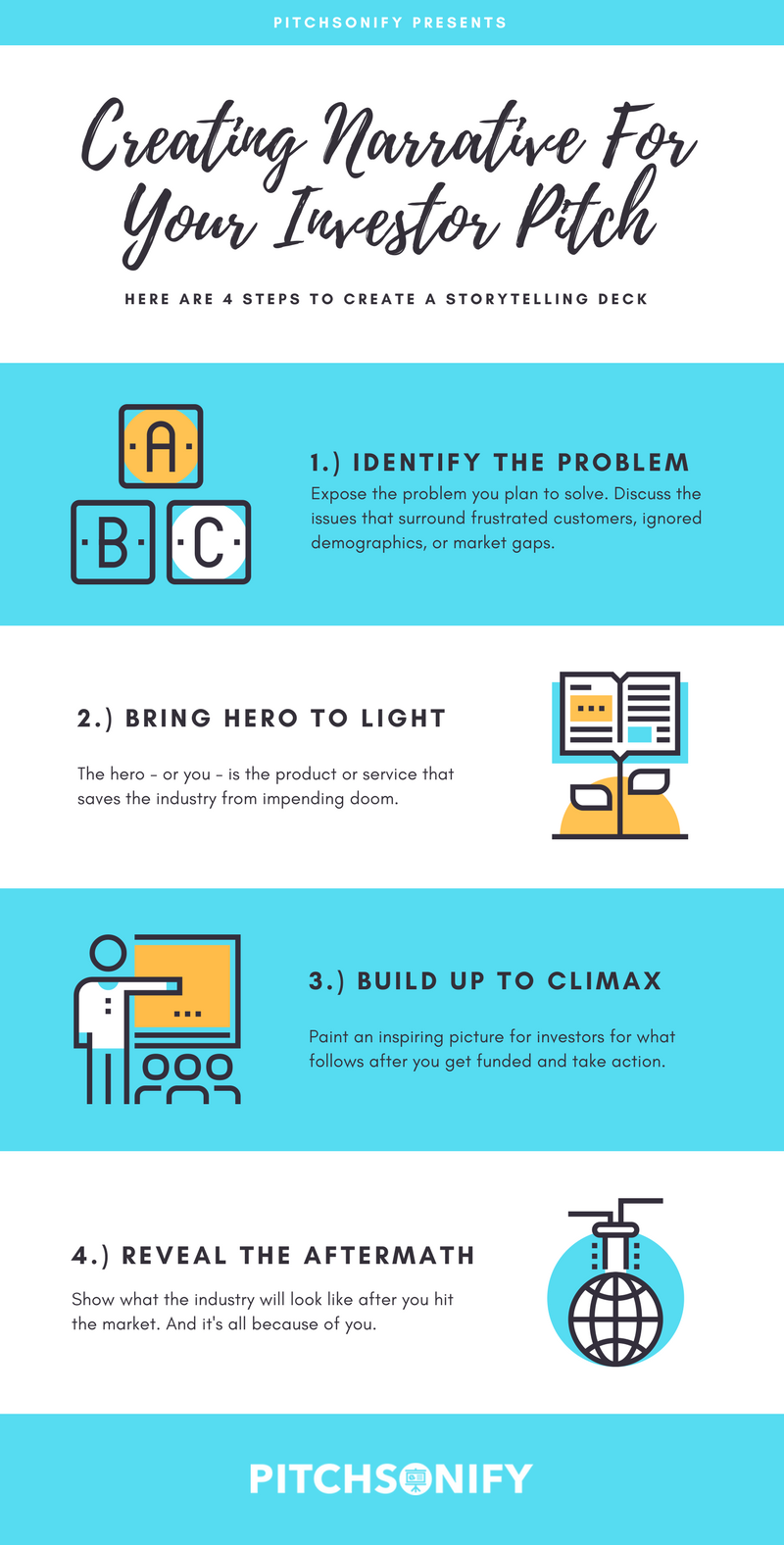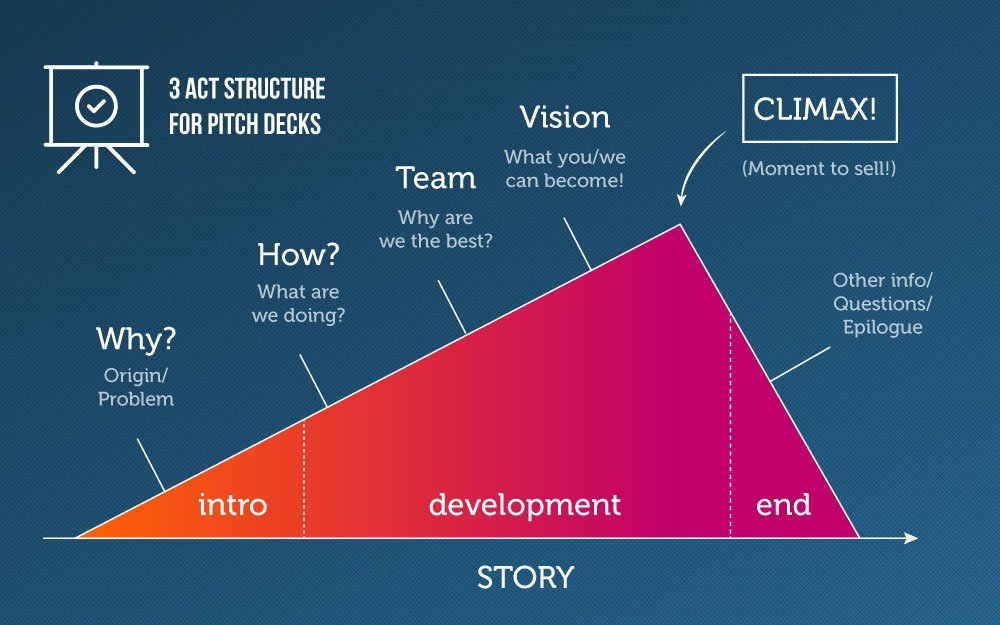
Read Time: 3m 4s
- A pitch deck is a 10-20 slide presentation that introduces a vision and business plan to a select audience.
- Different business types use these decks everyday. Most forget the art of storytelling and how it can help capitalize any type of pitch.
What is a pitch deck?
A pitch deck is the most important tool in the garage for any startup. Also known as an investor deck, this 10-20 slide presentation is the key to a successful round of funding. It actively introduces your company, your business plan, and the story behind your business.
Your pitch deck not only effectively communicate your vision, but establish credibility with investors and help influence their decision-making when done right.
These decks can also be used for on-stage presentations, sales demos, board meetings, and virtually any other presentation you need to put on.
Alongside a storytelling presentation and appealing design, the pitch deck is can be a powerful motivator to win the hearts and minds of any audience. Let’s explore more about these essential fundraising tools.
Who needs a pitch deck?
There are many different groups of business-folk who will need a pitch deck. A few common archetypes are:
- Startups who seek capital from investors
- Companies who seek corporate partnerships
- Employees who pitch to top-level Execs
- Founders on the hunt for a Co-founder
- Agencies who need to pitch ideas to a client
Related: The Ultimate Pitch Deck Guide to Raise Capital For Your Business
Normally you will present your deck in a face-to-face or online meeting with your audience. Make sure your deck is mobile friendly when you seek capital because 12% of investors read decks from their smartphones.
The art of telling a story
Your pitch deck will only be as good as the story you tell along with it.
“They may forget what you said, but they will never forget how you made them feel” – Carl W. Buechner, American Writer and Theologian
A story creates an emotional connection with your audience. It allows you to introduce yourself as a company, but also as people. Listeners want to root for someone, they want to be taken on a journey.
In fact, character-driven stories with emotional content result in better understanding and higher recall value than those that do not.
We’re hardwired to digest and use information based on how it is presented to us. This is why iconic storytellers such as Shakespeare, Roald Dahl, and JK Rowling can grab an audience’s attention and influence their behavior.
So let’s start with the basics of storytelling. Every story must have these elements:
- Problem
- Solution
- How the solution solves the problem
- The happy ending
When you pitch, you have 60 seconds to inform and persuade. So you need to hammer down the narrative right off the bat to hold your audience’s attention for the coming story.
In your story, you want to introduce problems in the industry that you target. The pain that they endure and how you plan to fix it based on research and facts.
Below we have an info graphic on how to create an narrative for your pitch in 4 easy steps.

Following an arc
Just like your favorite movie, your pitch will follow a story arc. Move your audience through the emotional ups and downs until “Eleven” walks through the door and saves Hawkins from the Upside Down. Hopefully you’ve seen Stranger Things 2 by now.
Here, SlideBean has an excellent example of how to set up your decks arc.

Source: Slidebean
Now get out there. Tell your story. Make a captivating first impression and get funded!
Read more:

 February 26, 2018
February 26, 2018